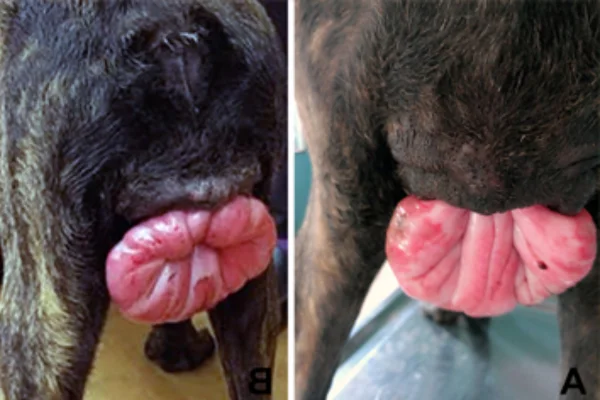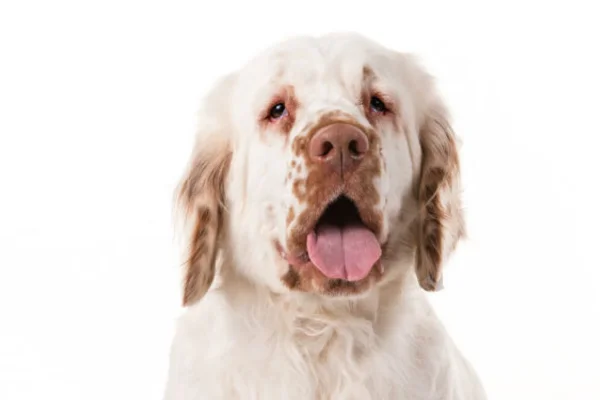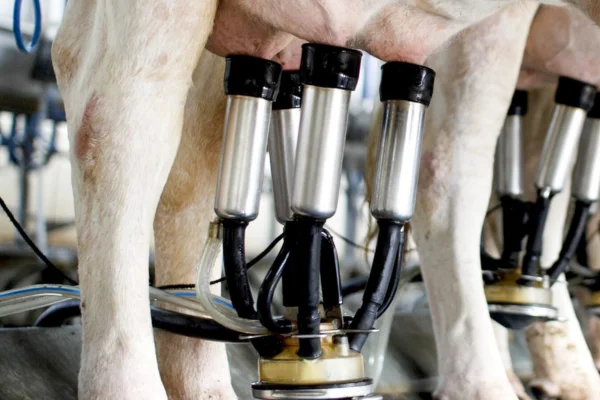Vulvovaginitis in Bitches: Causes, Symptoms and Treatment
Vulvovaginitis is an inflammation of the vulva and vagina that can affect bitches of all ages, although it is more common in young, unneutered females. This condition can cause significant discomfort and, if not treated properly, can lead to more serious complications. In this article, we'll explore the causes, symptoms, diagnosis and treatment options for vulvovaginitis in female dogs, as well as some preventative measures that owners can adopt.
Causes of Vulvovaginitis in Bitches
There are several potential causes of vulvovaginitis in female dogs, ranging from bacterial infections to anatomical problems. The main causes include:
- Bacterial InfectionsOne of the most common causes of vulvovaginitis is bacterial infection. Bacteria such as Escherichia coli, Streptococcus spp. and Staphylococcus spp. can colonize the vaginal area, especially if there is inadequate hygiene or conditions that favor bacterial growth.
- Fungal InfectionsFungi such as Candida spp. can also cause vulvovaginitis. This type of infection is more common in bitches with a compromised immune system.
- Anatomical problemsSome bitches may be born with anatomical abnormalities, such as an infantile vulva or a deviated urinary tract, which predispose them to recurrent infections and inflammation.
- Trauma or IrritationInjuries to the vaginal area caused by excessive licking, trauma or chemical irritants (such as unsuitable cleaning products) can also lead to inflammation.
- Hormonal DisordersHormonal changes, especially in uncastrated bitches, can influence the microbial balance in the vagina, increasing the risk of infections and inflammation.
- Foreign bodiesThe presence of foreign bodies in the vagina, such as plant fragments or toy debris, can cause irritation and inflammation.
Symptoms of Vulvovaginitis
The symptoms of vulvovaginitis in bitches can vary from mild to severe, depending on the cause and extent of the inflammation. Some common signs include:
Contents
- Vaginal dischargeIt can be clear, whitish, yellowish or bloody. The discharge is usually accompanied by an unpleasant odor.
- Excessive lickingBitches with vulvovaginitis often lick the vaginal area to relieve discomfort.
- Redness and swellingThe vulva may appear red and swollen due to inflammation.
- Frequent urinationInflammation can cause discomfort when urinating, leading to an increase in urinary frequency.
- Pain and discomfortSome dogs may show signs of pain, such as whining or refusing to sit.
- Behavioral changesIrritability and changes in behavior can be observed due to ongoing discomfort.
Diagnosis
The diagnosis of vulvovaginitis begins with a detailed clinical history and a thorough physical examination by a veterinarian. To determine the underlying cause of the inflammation, additional tests may be necessary, such as:
- Vaginal cytologyCollection of cell samples from the vaginal mucosa for microscopic analysis.
- Bacterial and Fungal CultureIdentification of specific pathogens present in the vaginal area.
- Urine testTo rule out concomitant urinary infections.
- UltrasoundIn cases where anatomical abnormalities are suspected, an ultrasound can be useful.
- BiopsyIn rare cases, a biopsy of the vaginal mucosa may be necessary to rule out more serious diseases.
Treatment
Treatment for vulvovaginitis depends on the underlying cause and the severity of the condition. Treatment options may include:
- AntibioticsIf bacterial infection is confirmed, specific antibiotics will be prescribed to eliminate the pathogens.
- AntifungalsIn the case of fungal infections, topical or systemic antifungals may be necessary.
- Proper hygieneKeeping the vaginal area clean and dry is crucial to preventing re-infection. Specific hygiene products for pets can be recommended.
- Dietary changes: Balanced diets and probiotic supplements can help maintain the right microbial balance.
- SurgeryIn cases of serious anatomical problems, surgery may be necessary to correct the abnormalities.
- Hormone therapyIn some bitches, castration may be recommended to stabilize hormone levels and prevent recurrences.
Prevention
Preventing vulvovaginitis involves various measures that guardians can adopt to reduce the risk of inflammation and infection:
- Regular hygieneKeeping your dog's genital area clean and dry is essential. Regular cleaning, especially after walks outdoors, helps to prevent the build-up of dirt and bacteria.
- Balanced dietA balanced diet rich in nutrients strengthens the dog's immune system, helping to prevent infections.
- Avoid Irritating ProductsUse only specific hygiene products for pets and avoid aggressive chemicals that can cause irritation.
- Regular check-upsRegular veterinary consultations allow for the early detection of any abnormalities and the immediate treatment of problems before they worsen.
- Parasite ControlKeep the dog free of parasites such as fleas and ticks, which can cause irritation and secondary infection.
- Castration: Castration can help prevent hormonal imbalances that contribute to vulvovaginitis, especially in bitches that will not be used for breeding.

Final considerations
Vulvovaginitis in female dogs is an uncomfortable condition, but one that can be treated and controlled with appropriate intervention. Owners play a crucial role in identifying symptoms early and seeking veterinary treatment. With appropriate care and preventative measures, it is possible to minimize episodes of vulvovaginitis and ensure the well-being of female dogs. If your dog shows symptoms of vulvovaginitis, don't hesitate to consult a vet for an accurate diagnosis and an effective treatment plan.
Frequently Asked Questions
1. How do dogs contract giardiasis? Dogs contract giardiasis by ingesting cysts of the parasite present in contaminated water, food or surfaces. The cysts are highly resistant and can survive for long periods in the environment.
2. What are the main symptoms of giardiasis in dogs? The main symptoms include pasty diarrhea, abdominal pain, vomiting, dehydration, anorexia and weight loss. Some dogs may also experience lethargy and general discomfort.
3. How is giardiasis diagnosed? Diagnosis is made by analyzing samples of the animal's feces, using methods such as direct examination, rapid tests, ELISA, immunochromatography, coproparasitology and PCR. Due to the intermittent release of cysts, it may be necessary to take several samples.
4. What is the recommended treatment for giardiasis in dogs? Treatment involves the use of drugs such as fenbendazole, which has been shown to be more effective than metronidazole in eliminating the parasite. In addition, it is necessary to treat the clinical symptoms and carry out environmental decontamination to interrupt the parasite's cycle.
5. How can giardiasis be prevented in dogs? Prevention includes keeping the environment clean, especially in areas where the dog defecates, providing drinking water and avoiding places known to be frequented by many other animals. Vaccination against giardiasis can also be discussed with the vet.
Thanks for stopping by, check out our other work too
https://vettopbr.com/tosse-em-caes/








